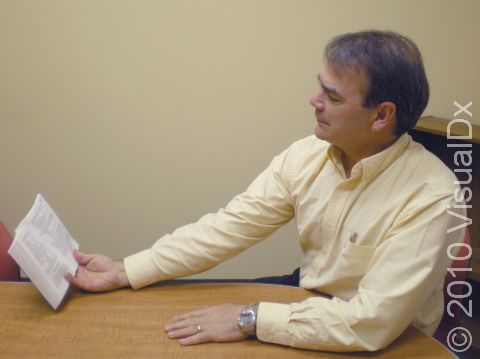Presbyopia
Presbyopia is an age-related change in vision whereby one loses the ability to see near without corrective lenses or corrective surgery. The cause of presbyopia is a change in the ability of the human lens to change its shape (a process called accommodation) to allow one to focus on objects that are at close range. The process of the lens losing its elasticity (accommodative ability) begins around age 10, but vision changes aren’t noticeable to a person until he/she reaches approximately 40 years of age. Vision changes of presbyopia will climax (need for maximum correction) by approximately age 63–65.
Who's At Risk?
Anyone aged 40 and beyond will experience presbyopia. The timing of it is dependant upon the underlying requirement for vision correction. Meaning, if you are normally nearsighted (myopia) and wear corrective lenses for this, you might not be aware of difficulty with presbyopia until later in life (ie, latter 40s or early 50s). However, if you are normally farsighted (hyperopia), you may experience presbyopia even before age 40. Certain general medical conditions, such as diabetes and high blood pressure, can affect the course and degree of presbyopia.
Signs & Symptoms
Although you cannot see presbyopia just by looking at the eye, you will know it is happening when you notice:
- In order to read, you must hold the material farther from you.
- Difficulty with needlepoint, crochet, or near-vision–requiring hobbies.
- Difficulty seeing text on the computer screen.
- Reduced contrast and clarity of reading material.
- The need for brighter and more direct lighting for reading.
- Fatigue, headache, or eyestrain – or all 3 – when reading or using the computer.
Self-Care Guidelines
There is nothing that can be done to prevent the natural process of presbyopia. Ensuring that you have good, bright, and well-focused light and holding reading material farther away when you read is often very helpful. Good self-care also includes regular eye-care checkups, not only to preserve and protect your eyes but to detect whether you are getting presbyopia.
Those with perfect eyesight that develop presbyopia can often use reading glasses found in drugstores. These are very simple magnification lenses, usually with powers from +1 to +4 diopters (a measure of lens power). If this applies to you, take some reading material with you and test out the various glasses to find the one that works best for you. For a best test, hold the material at your normal (usually 14 inches away) reading distance. Note that a different power is needed for use with the computer.
Note: Claims that certain eye exercises, therapeutic contact lenses, or medications can be used to treat presbyopia are false.
Treatments
Corrective glasses or differing contact lenses are most frequently used in treatment of presbyopia, but there are now many surgical procedures for vision correction. These surgical procedures (performed by ophthalmologists) are all considered refractive surgery, and they are used for the correction of myopia (nearsightedness), hyperopia (farsightedness), presbyopia (age-related loss of close vision), and astigmatism (irregular shaping of the cornea). When you seek care for presbyopia, it is imperative that you ask about all the options available to you as well as the risks and benefits of each of these options.
Visit Urgency
The time to seek medical advice for presbyopia is when self-care no longer works and/or:
- The difficulty with close vision prevents you from reading or doing close work comfortably.
- You find that working with the computer and/or reading has become difficult.
- You are having more headaches, eyestrain, fatigue, or frustration when trying to read and/or use the computer.
Trusted Links
References
Yanoff M, Duker JS, eds. Ophthalmology. 2nd ed, pp. 59, 68-69. St. Louis, MO: Mosby, 2004.
Last modified on October 10th, 2022 at 3:39 pm

Not sure what to look for?
Try our new Rash and Skin Condition Finder


